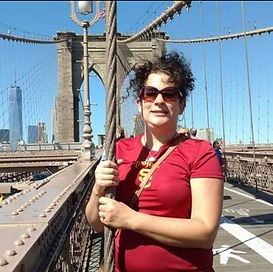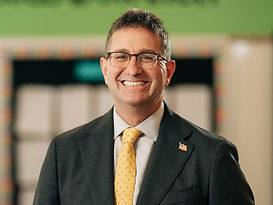GUEST COLUMN.
THE EMERGING CHALLENGE OF BUDGETING AND PERFORMANCE
By Donald F. Kettl, professor emeritus and former dean at the University of Maryland School of Public Policy and author of Bridgebuilders: How Government Can Transcend Boundaries to Solve Big Problems (with William D. Eggers)

The fundamental practice of governmental budgeting at all levels —allocating money to agencies to fund their programs—is confronting an emerging and troublesome challenge. The inescapable reality is that the budgets don’t neatly reflect government operations—because there’s no significant issue that any one agency can control. And that’s a fundamental argument of the book, Bridgebuilders: How Government Can Transcend Boundaries to Solve Big Problems, that William D. Eggers and I have written.
This not only creates a mismatch of strategy and implementation. It also creates profound disincentives for doing what must be done, if the government is going to make programs work as people expect.
The fundamental problem is this. We tend to budget by agency and then, typically, by program within the agency. However, the actual implementation of almost every program depends on complex networks involving multiple programs, agencies, levels of government, sectors of society, and even foreign governments. The flow of action needs to make connections among all these pieces, but the flow of budget decisions typically doesn’t match up.
A great example is the effort by communities across the country to crack the problem of those experiencing homelessness. In Houston, for example, the number of people experiencing homelessness fell 62 percent from 2011 to 2022. To achieve this remarkable result, however, the Houston Coalition for the Homeless wove together more than 100 different organizations, some governmental and some nonprofit.
The effort drew on funding from various channels including a HUD Block Grant and state, local, and private-sector funding. In 2022, Houston, Harris County, and the Coalition for the Homeless collective received an additional $45 million in federal funds and allocated $100 million in COVID-19 relief. The Bezos Day 1 Families Fund also awarded the city a one-time $5 million grant to help area families move to permanent housing.
Houston’s remarkable progress would have been impossible without the involvement of all these organizations and without the coordination of all the funding streams. However, this coordination didn’t flow through typical budgetary channels. The strategy took hard work to weave the pieces together.
The key, as it turned out, was to focus all the players on the system’s overall objective—reducing homelessness in Houston. It then depended on determining the role that each of the players ought to play—depending on their particular competencies and capacity. It built on a system that tracked individuals through the system—and matching them with the organizations that could best meet their needs. It ultimately relied on performance dashboards that followed both the individuals and the organizations—and how they came together to solve the broader problem.
Now, programs to attack the problems of homelessness might well be one of the most complex policy systems. Even relatively straightforward systems like fire protection, however, pull together a big collection of organizations. In New York State, for example, Governor Gov. Kathy Hochul’s budget proposal back in March contained $50 million to support local volunteer fire departments, including a substantial investment in stipends for volunteers who complete a training program. This was in addition to funding to support emergency medical services and the rehabilitation of fire stations, as well as local governments that funded their own fire and emergency services from their own revenues.
Other cities have launched similar efforts. The nonprofit Family League of Baltimore pools funds from multiple public and private sources to ensure that Baltimore children will be born healthy, succeed in school, graduate high school, and transition into higher education and the workforce.
At the state level, California created the Community Economic Resilience Fund to promote regional resiliency, equity, sustainable growth, and inclusive planning. Thirteen regions will get funds for planning and implementing road maps around climate change, regional infrastructure, workforce development, and other areas.
As the work of government increasingly stretches across such complex networks, the funding needs to follow. This effort, however, requires investments focused on improving policy outcomes. It requires a way to track those outcomes, including determining which agency produces which outcomes. It requires sweeping away agencies’ resource guarding, based in stovepiped thinking, that too often stands in the way of the coordination that these programs need. And it requires a data system that can follow the funds from the money that goes into the results that come out.
The emerging world of artificial intelligence offers great promise in making the data links that this complex world of network’s needs. The system has come a long way from year-over-year changes in everything from fire calls answered to burglars arrested. The next step that the process needs is creating data systems that provide a clear, intelligible language that all of those involved in the system can speak and share.
Most of all, as we argue in Bridgebuilders, we need leaders who are adept at weaving these networks together. In Houston, Mike Nichols, head of the Coalition for the Homeless, was the bridgebuilder in chief. Where these networks have worked well, it’s been because leaders like Nichols have seen it as their job not to manage their part of the world but to create connections among the organizations responsible for producing results.
This frames the ultimate challenge for accountability in these complex networks. On one hand, everyone providing money to an organization wants to know how it’s being spent. That’s a vertical function. On the other hand, what really matters most is what outcomes the network produces. That’s a horizontal function.
That’s a two-part process: nurturing the leaders who know how to make those links, and creating the AI-informed systems that link the data needed to track results.
The connection between these pieces might seem inordinately complicated. But it comes down to smart leaders who lead smartly, and who understand that smart leadership depends more than ever on the data systems that can drive them to where they need to go.
This Guest Column was originally published by the Government Finance Research Center and was edited by Katherine Barrett and Richard Greene or Barrett and Greene, Inc.



































































































